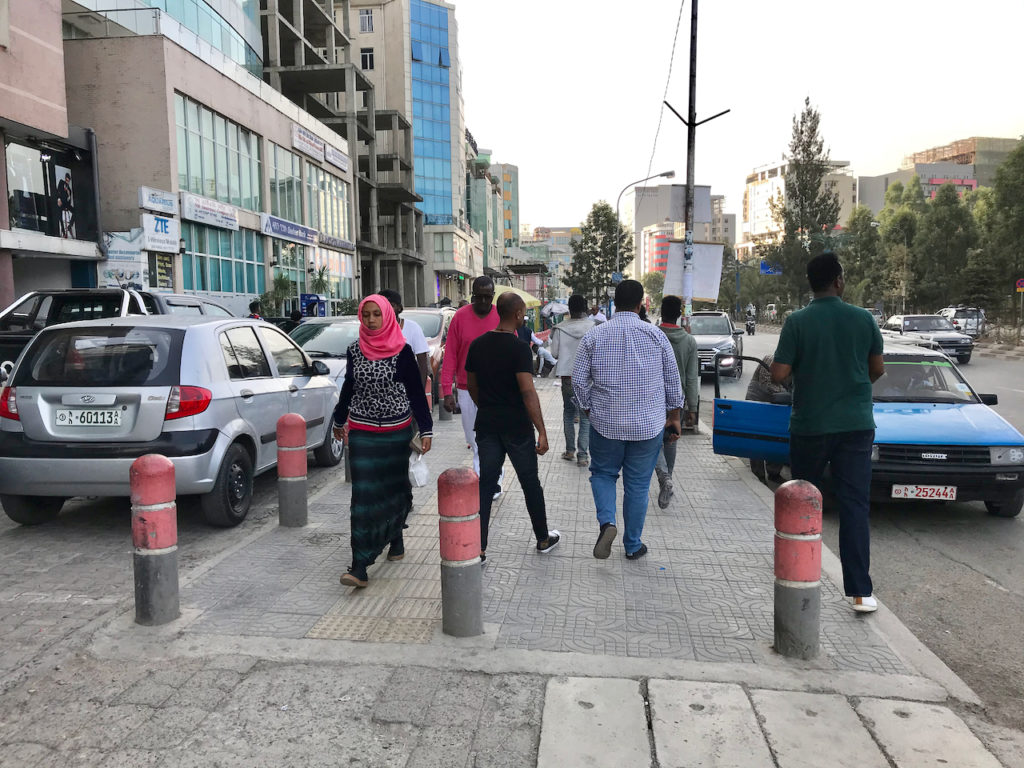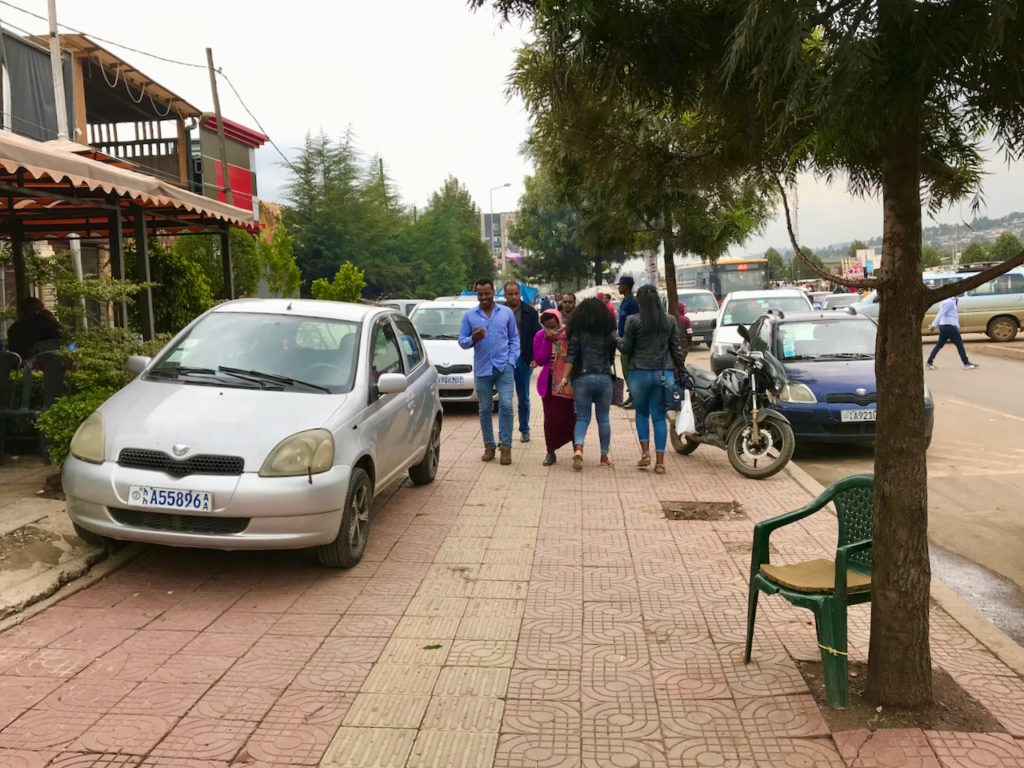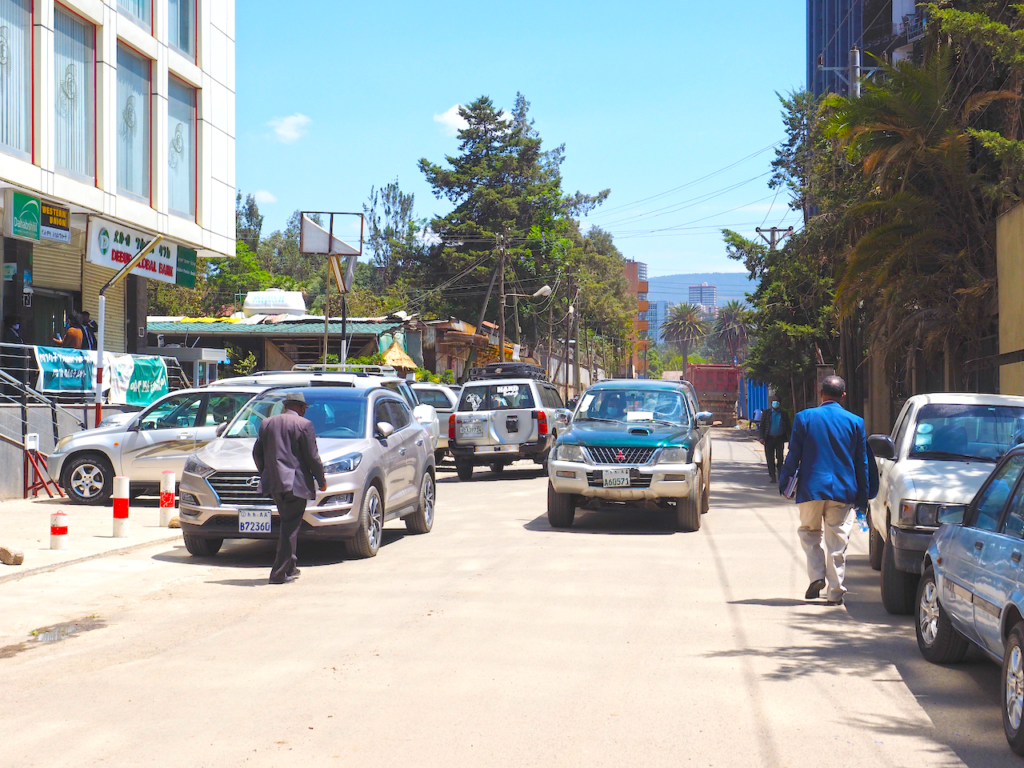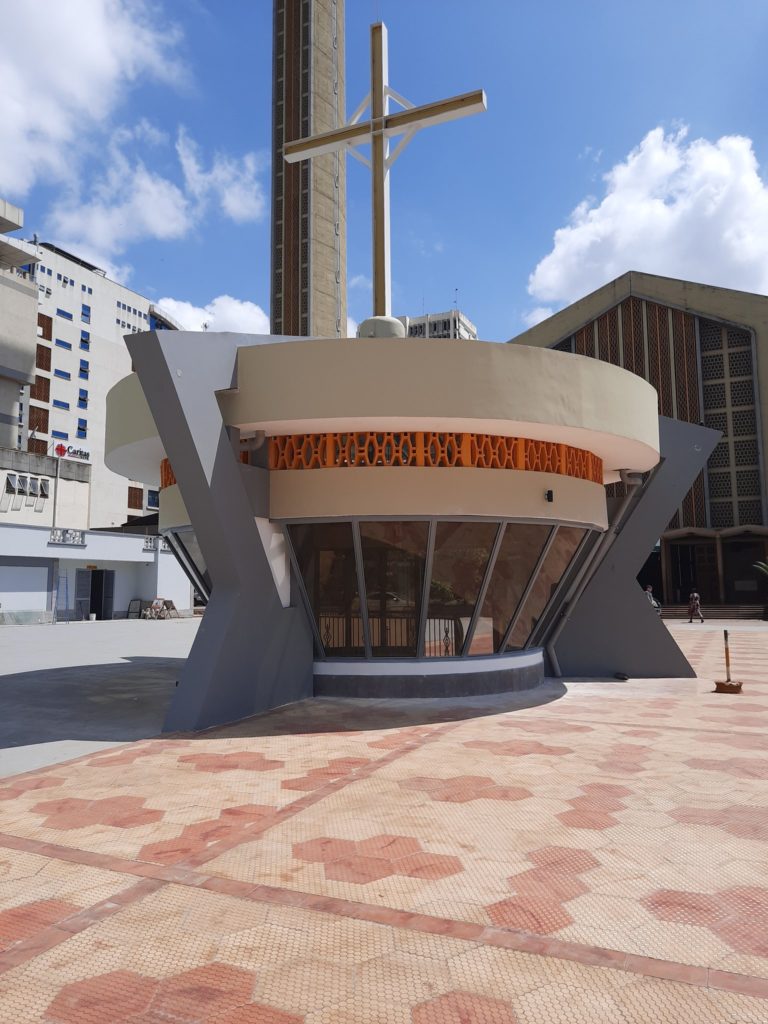
April 23, 2021
Demand responsive parking in African cities
In many cities around the world, the increased usage of private cars has contributed to congestion, pollution and economic loss. Nairobi and Addis Ababa are no exception. Parking policies in these cities are convenient for motorists but have proven inefficient in traffic management since they promote private vehicle use and exacerbate congestion. To improve existing regulations, it is essential to appreciate how parking policies can contribute to an efficient integrated transport system.
On a typical day, the streets of downtown Nairobi are filled with cars angling for space on the city’s increasingly congested streets. Double and even triple parking is rampant, and cars often park on spaces meant for pedestrians and cyclists. IBM’s 2011 parking survey found that the average time spent searching for a parking spot in Nairobi was 32 minutes, with 13 percent of respondents reporting that they drive more than one hour to find a parking space.



In response to the apparent shortage of parking, many governments are starting to build large parking structures. The Nairobi Metropolitan Service (NMS) plans to build a 3,000 slot car park at the Sunken Car Park and another parking structure at the Machakos Bus Station. The projects are expected to be public private partnerships where the city will provide the land and private developers will construct the parking structures.

In Ethiopia, Addis Ababa, similar plans are afoot to expand the parking supply. The city recently completed construction of a 1,400-car parking structure beneath Meskel Square. The Addis Ababa master plan calls for 60 new parking structures. Already, automated parking structures have been built at Merkato and Megenagna.
But is there really a shortage of parking, and will new parking structures have the intended effect of solving congestion? According to surveys conducted by ITDP in 2016, many of Nairobi’s off-street lots had considerable unused capacity. Yet these existing structures remained underutilised as drivers sought out cheaper on-street parking. Currently, motorists pay only KES 200 (USD 1.85) to park on the street for an entire day in downtown Nairobi, compared to off-street fees which are charged per hour at KES 50 (USD 0.46) for the first hour and KES 60 (USD 0.55) for every additional hour. In Addis Ababa, on-street parking fees in the main commercial districts, such as the area around Meskel Square, are as low as ETB 60-80 (USD 1.45-1.93) per day.



In the absence of higher fees commensurate with market demand, on-street parking areas will remain crowded even as the off-street supply is expanded. In the long run, an increasing supply of parking will encourage more drive-alone trips and greater reliance on personal vehicles. This eventually increases congestion on our roads, making parking the cause of congestion instead of the solution. Facing crowded streets, cities pursue road widenings and new parking structures, leading to a vicious cycle of increasing congestion and pollution.
One rationale for building the structured parking at Nairobi’s Sunken Car Park was the loss of on-street parking as a result of new walkways built on Kenyatta Ave and Muindi Mbingu St. Yet the reduction in parking spaces due to the pedestrian improvements was just over 200 spaces—less than a tenth of the number that will be created through the new project. A further concern is that the parking project will result in the destruction of the many mature trees at the Sunken Car Park, which is used as a recreational space by skaters during the weekends.

The sunken car park in Nairobi, Kenya used for skating during public holidays and weekends.
Is there a smarter way to manage parking? A strategy that adopts hourly fees based on the level of demand can ensure sufficient availability and ensure that on-street spaces are valued appropriately. With demand-responsive pricing, parking charges will vary depending on location and even time of day. In Nairobi and Addis Ababa, on-street parking in the CBD should be relatively higher to match the high demand. Studies show that motorists are extremely sensitive to cost. When the price of private vehicle use is high, commuters opt for public transport. Cities with higher parking rates have more public transport rides per capita than cities with lower parking rates. The extra revenue generated from demand responsive pricing can be used to fund public transport improvements.
Hourly pricing can help shift long-term commuter parking to off-street lots, freeing up prime on-street spaces for short-term users. In the process, hourly parking fees can increase revenue for cities. In Nairobi, NMS has floated plans to implement an automated hourly parking system for on-street parking areas. The city also planned to create a tiered parking fee structure with higher rates in central areas, but implementation has stalled due to an ongoing court challenge from public transport operators, who would be subject to the new fee structure. (Public transport vehicles are required to pay parking fees in Nairobi and other Kenyan cities, even if they only stop temporarily to pick up passengers.)
Cities should enforce parking regulations with stricter fines and digital enforcement systems. IT-based management systems can improve efficiency by ensuring real time data tracking, more accurate citations, easier payments, and better documentation of violations.
In Tanzania, the Tanzania Rural and Urban Roads Agency (TARURA) has implemented a smart parking system in Mwanza. The system takes pictures of parked cars’ plate numbers using cameras mounted on a scooter or using smartphones and transmits them to a control room. The information analyzed to identify vehicles that will be billed. Despite the limitations of the system, collections have improved and defaulters are traced and penalised. Users make payments through a government payment gateway using a mobile phone. TARURA now plans to conduct a parking study in the city of Dar es Salaam to inform the implementation of an IT-based parking system and mobilise additional funding through better on- and off-street parking management.
Once on-street parking is under control, how should cities manage off-street parking? As discussed above, governments are often eager to subsidise the construction of off-street lots, but off-street lots already have a high rate of return without government support. One of Nairobi’s newest private off-street lots, the Holy Family Basilica silo, has a capacity of 516 parking slots split into four underground levels. The facility has both short term and long-term pricing. Daily charges are KES 500, and monthly charges are Kshs 15,000. Short-term pricing is charged at an hourly rate, KES 100 for the first two hours and KES 100 for each additional hour. The project sponsor expects to break even within a mere five years.
Instead of subsidising off-street parking, governments should create the right regulations to allow the private sector to respond to parking demand. More and more cities are abolishing minimum parking requirements to ensure that developers can respond to the expected demand instead of providing a fixed amount of parking regardless of the character of the development. The availability and price of parking affects ridership in transit and dictates user behavior in cities, so cities are taking these reforms a step further and adopting parking maximums near mass rapid transit stops.
In sum, how we plan for parking today will have a major effect on private vehicle dependence and congestion in our cities. Effective parking management is an essential tool to facilitate the efficient use of road space and ensure free passage for pedestrians, cyclists, public transport users, and motorists.
Learn more about the parking myths that hamper progress in our cities and alternative solutions through our Parking basics publication.


